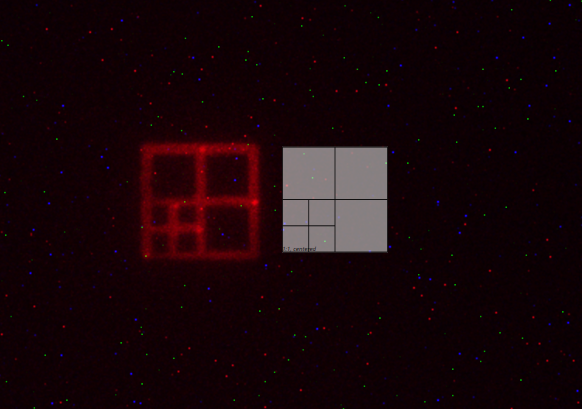Print from File
This workflow moves the stage along coordinates that were read from a file.
This enables a 2D printing of arbitrary structures.

File Format
The given file is read as list of instructions that are separated by newlines.
Lines starting with # are skipped.
Supported instructions are approach, retract, ffmove, ffdelay, linmove and delay.
| Instruction | Description | Format |
|---|---|---|
| approach | Instructs the system to lower the probe until the surface is reached. After this instruction was processed, the system will adjust its z position to keep Setpoint during subsequent motions. |
|
| retract | Instructs the system to retract the probe from the surface. After this instruction the system will not try to keep Setpoint anymore. |
|
| in-contact move | Represents a target position to move to while adjusting the z position to keep Setpoint. |
|
| in-contact delay | Specifies a duration during which the z position is adjusted to keep Setpoint. |
|
| move | Represents a 3d target position to move to. |
|
| delay | Specifies a duration during which the z position is kept. |
|
Preview
The preview mechanism overlays the selected file’s content onto the video feed, scaled according to the active magnification.
However, the preview is centered and does not necessarily correspond to actual placement of the printed structure.
Example
A rectangle with two nested crosses could be printed with following instructions.
# rectangle
approach,5,0
ffmove,20,0,50,20
ffmove,20,20,50,20
ffmove,0,20,50,20
ffmove,0,0,50,20
retract,10,10,0
# cross a
linmove,10,0,10,10,0
approach,5,0
ffmove,10,20,50,20
retract,10,10,0
linmove,0,10,10,10,0
approach,5,0
ffmove,20,10,50,20
retract,10,5,10
# cross b
linmove,5,0,10,10,0
approach,5,0
ffmove,5,10,50,20
retract,10,10,0
linmove,0,5,10,10,0
approach,5,0
ffmove,10,5,50,20
retract,10,5,10

- The instructions above previewed and printed.
Execution
The file is loaded and analyzed on every run. The execution will not start if inconsistencies are detected. The progress information shown within the software is updated when an instruction is about to begin. It displays the currently run instruction and its line number.
On normal termination the initial xy position will be restored.
Note that in-contact operations are only supported between approach and retract and the file must leave the system in a retracted state.
System will return to global idle pressure on both normal termination and cancellation.
Runtime cancellation will cause an additional retraction if the probe is approached.
Execution control is in the software itself. Therefore, slight latency variances can be observed between instructions.